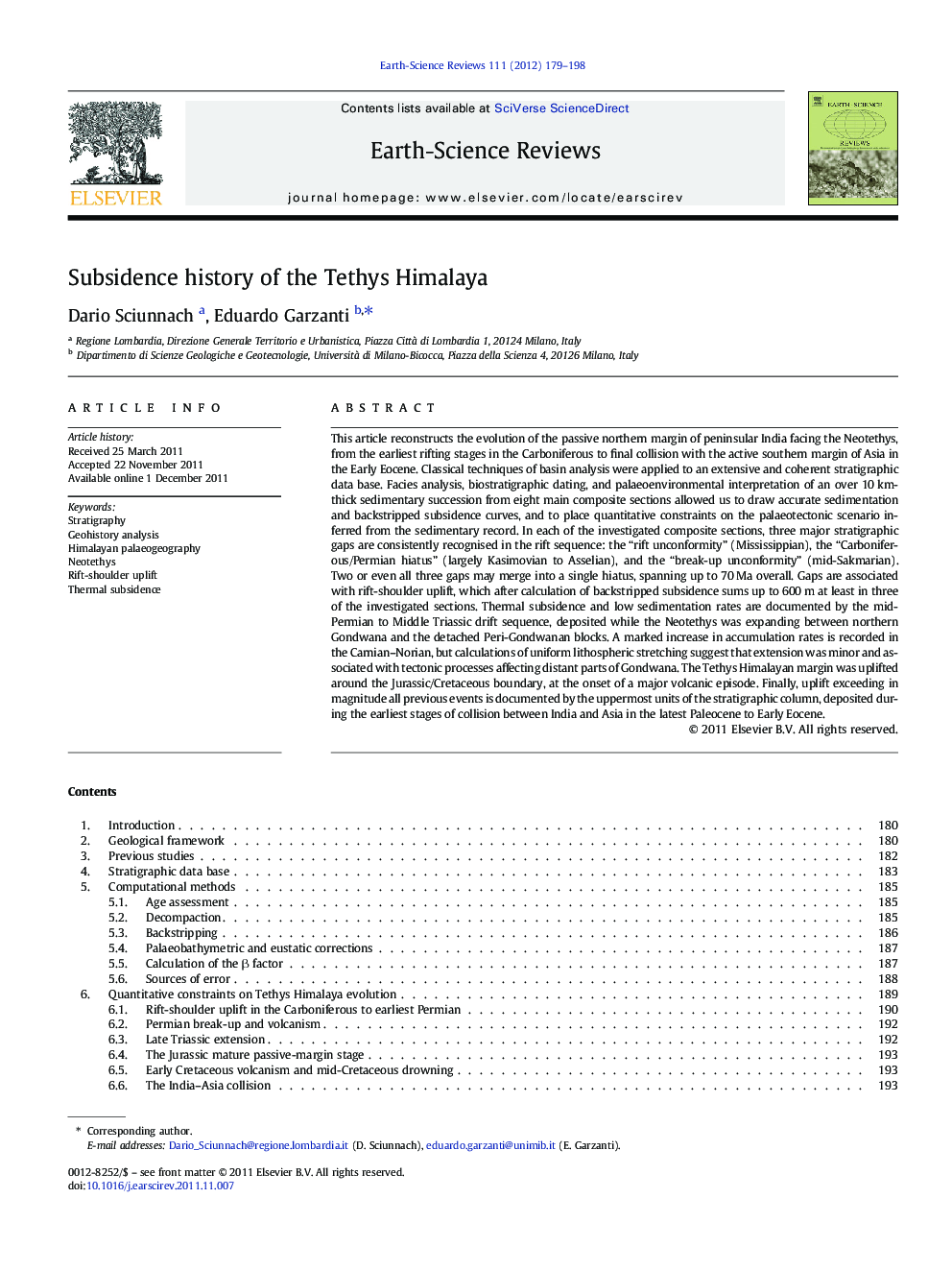| کد مقاله | کد نشریه | سال انتشار | مقاله انگلیسی | نسخه تمام متن |
|---|---|---|---|---|
| 4725984 | 1639995 | 2012 | 20 صفحه PDF | دانلود رایگان |

This article reconstructs the evolution of the passive northern margin of peninsular India facing the Neotethys, from the earliest rifting stages in the Carboniferous to final collision with the active southern margin of Asia in the Early Eocene. Classical techniques of basin analysis were applied to an extensive and coherent stratigraphic data base. Facies analysis, biostratigraphic dating, and palaeoenvironmental interpretation of an over 10 km-thick sedimentary succession from eight main composite sections allowed us to draw accurate sedimentation and backstripped subsidence curves, and to place quantitative constraints on the palaeotectonic scenario inferred from the sedimentary record. In each of the investigated composite sections, three major stratigraphic gaps are consistently recognised in the rift sequence: the “rift unconformity” (Mississippian), the “Carboniferous/Permian hiatus” (largely Kasimovian to Asselian), and the “break-up unconformity” (mid-Sakmarian). Two or even all three gaps may merge into a single hiatus, spanning up to 70 Ma overall. Gaps are associated with rift-shoulder uplift, which after calculation of backstripped subsidence sums up to 600 m at least in three of the investigated sections. Thermal subsidence and low sedimentation rates are documented by the mid-Permian to Middle Triassic drift sequence, deposited while the Neotethys was expanding between northern Gondwana and the detached Peri-Gondwanan blocks. A marked increase in accumulation rates is recorded in the Carnian–Norian, but calculations of uniform lithospheric stretching suggest that extension was minor and associated with tectonic processes affecting distant parts of Gondwana. The Tethys Himalayan margin was uplifted around the Jurassic/Cretaceous boundary, at the onset of a major volcanic episode. Finally, uplift exceeding in magnitude all previous events is documented by the uppermost units of the stratigraphic column, deposited during the earliest stages of collision between India and Asia in the latest Paleocene to Early Eocene.
Journal: Earth-Science Reviews - Volume 111, Issues 1–2, February 2012, Pages 179–198